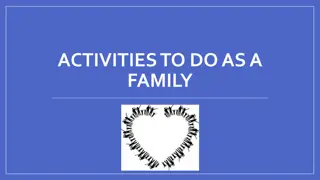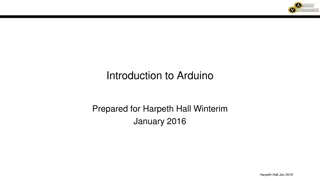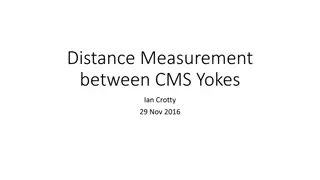
Examining Missingness among Children in Out-of-Home Care Placement in Nebraska
Explore the prevalence and contexts of missing children in out-of-home care placements in Nebraska. The study delves into predictors, risk factors, and case contexts of missing children, shedding light on this critical issue.
Download Presentation

Please find below an Image/Link to download the presentation.
The content on the website is provided AS IS for your information and personal use only. It may not be sold, licensed, or shared on other websites without obtaining consent from the author. If you encounter any issues during the download, it is possible that the publisher has removed the file from their server.
You are allowed to download the files provided on this website for personal or commercial use, subject to the condition that they are used lawfully. All files are the property of their respective owners.
The content on the website is provided AS IS for your information and personal use only. It may not be sold, licensed, or shared on other websites without obtaining consent from the author.
E N D
Presentation Transcript
Special Report: Examining Missingness among Children in Out-of-Home Care Placement in Nebraska Alyssa Nystrom a,Heather Wood b,Linda M. Coxb, Tara N. Richards a, andMonika Gross, J.D. b a School of Criminology and Criminal Justice, UNO; bNE Foster Care Review Office
Background In 2019, Nebraska LB-154 mandated that the NSP, in collaboration with the NCIA, conduct a study on the scope of missing Native American women and children in Nebraska ; Richards and Nystrom assisted. 4 point-in-time counts (in 2020) of all reported missing persons in the state of Nebraska. Results indicated that at each of the time points about two-thirds of Nebraska s reported missing persons were minors (i.e., ages 18 years or younger).1 Most were youth (ages 13-17); Disproportionately male; Black and Native American. School of Criminology and Criminal Justice
Background Recent estimates (2019) show that approximately 1% of children in foster care are missing from care at any given time. 2 Predictors/risk factors and context for running away from foster care. Predictors: girls, older youth, placement instability (e.g., more placements), behavioral issues 2-4 Context: Running to and running from 5 Lack of research on running away among children in out-of-home care: placements due to child welfare, delinquency status, and cross-over youth. School of Criminology and Criminal Justice
Current Study Present study aims to shed light on the prevalence and context of missingness (i.e., the child has been reported as a missing person) among children in out-of- home (OOH) care placements. 1. Among children who had been officially reported missing, what was the prevalence and contexts of children who were in OOH care placements compared to children who were not in OOH care placements? 2. Among children who were in OOH care placements, who had been officially reported as a missing person (i.e., what individual- and case-level factors predict missingness among children in OOH care)? 3. What are the case contexts of children in OOH care placements who are officially reported as a missing person? School of Criminology and Criminal Justice
Data 1. Data on officially reported missing minors (i.e., 18 years and younger) from first point-in-time count on 1/20/20 (from LB-154 study). (a) the Nebraska Missing Persons List (NMPL), (b) the National Missing and Unidentified Persons System (NamUs), and (c) the National Center for Missing and Exploited Children s (NCMEC) missing persons list. 2. Administrative records from Foster Care Review Office (FCRO) for children described as in an OOH placement or having just been in an OOH placement and nearing permanency completion on 1/20/20. School of Criminology and Criminal Justice
Analysis RQ 1 Used population of children officially reported missing on 1/20/20. Chi-square/t-tests to compare children who were in an OOH care placement versus not in an OOH placement when reported missing. RQ 2 Used population of children who were in OOH placements on 1/20/20. Chi-square/t-tests were used to compare children in OOH care who were officially reported missing versus not officially reported missing. RQ 3 Used the subsample of children in OOH placements who had been officially reported missing. Chi-square/t-tests were used to compare children who had a FCRO review versus those that did not. Qualitative analysis of narrative reviews. School of Criminology and Criminal Justice
Findings RQ1: prevalence/contexts of children officially reported missing, OOH care vs. not OOH care Nearly 30% of children who were officially missing on 1/20/20 were missing from OOH placements. i.e., 381 missing children: 114 in OOH placements No differences regarding age and sex. 16.01 vs. 15.84 years old; 52% male Differences on race and time missing. Children missing from OOH care placements more likely to be Black, Native American. Children missing from OOH care placements were missing for significantly less time, average of 0.16 years vs. 0.67 years. Children missing not in OOH care placements were more likely to be listed as an unknown race. School of Criminology and Criminal Justice
Findings RQ2: prevalence/contexts of children in OOH care officially reported missing vs. not officially reported missing 4,103 children in OOH placements on 1/20/20. 114 children officially reported missing (3%) No differences regarding sex. 51% vs. 53% male Differences on race. Black and Native children disproportionately officially reported as missing from OOH. White children disproportionately not (officially) reported missing from OOH. Note: 84 children had been reported to FCRO as missing from placement. 51 had been officially reported as missing. 33 had been reported to FCRO as missing from placement, but not officially reported as missing person. School of Criminology and Criminal Justice
Findings RQ2: prevalence/contexts of children in OOH care officially reported missing vs. not officially reported missing cont. Differences in OOH type/supervision Greater rates missing from group homes, institutions, independent living placements, detention facilities, and near permanency placements. 18% missing as nearing permanency (most were adoptive placements) Lower rates missing from relative/kinship foster homes, trial home visits. Children supervised by Probation (alone or with NDHHS/CFS) missing at greater rates. Children supervised by NDHHS/CFS alone missing at lower rates. Differences in Placement stability Greater # times in care (lifetime). 2.59 versus 1.49 times in OOH care Greater # of OOH placements (lifetime). 8.89 versus 3.96 OOH placements (lifetime) Fewer days in placement. 103.52 versus 202.23 School of Criminology and Criminal Justice
Findings RQ3: context(s) of children in OOH care officially reported missing Qualitative Analysis of 53 children s review/s from FCRO highlighted: Mental Health (MH) Challenges 85% of children had MH challenge 35% receiving services 30% treatment resistant 9% placement not prepared for MH challenges Missingness impacted management of youth s MH care Substance Use (SU) Problems 49% children had substance use problems 13% receiving SU services School of Criminology and Criminal Justice
Findings RQ3: context(s) of children in OOH care officially reported missing cont. Trafficking 5 suspected/documented sex trafficking; 1 suspected labor trafficking Linkage between trafficking and missingness; children didn t recognize victimization Violence/Victimization in Placement 23% involved in violence (e.g., fighting) 11% victims of violence (e.g., child sexually assaulted) School Problems 53% truancy/attendance issues 36% behavioral issues School of Criminology and Criminal Justice
Summary 30% of NE s officially reported missing children were missing from OOH placements. Disproportionate impact on Black and Native children. 3% of children in OOH care were officially reported as missing from care. Higher than national estimates on missingness from foster care . Disproportionate impact on Black and Native children. Placement stability matters. Relative foster care protective against missingness, but 18% of children missing from OOH placements were missing as they were nearing permanency. School of Criminology and Criminal Justice
Next Steps Report out and discuss with stakeholders. Submit report to NE Legislature. Post report and presentation to UNO SCCJ and FCRO webpages. Submit peer-reviewed journal article will make that available upon publication. Continue FCRO-UNO Collaboration. DEPARTMENT NAME
References 1. Sutter, M., Shafer, S., Weidner, E., Richards, T., Wright, E., Nystrom, A., & Williams, K. (2020). LB154 Report: Prevalence of Missing Native American Women and Children in Nebraska; Barriers to Reporting and Investigating; and Opportunities for Partnerships. 2. Branscum, C., & Richards, T.N. (forthcoming). An updated examination of the predictors of running away from foster care in the United States and trends over ten years (2010-2019). Child Abuse & Neglect. 3. Bowden, F., & Lambie, I. (2015). What makes youth run or stay? A review of the literature on absconding. Aggression and Violent Behavior, 25, 266-279. 4. Kim, H., Chenot, D., & Lee, S. (2015). Running away from out of home care: A multilevel analysis. Children & Society, 29(2), 109-121. 5. Wulczyn, F. (2020). Race/ethnicity and running away from foster care. Children and Youth Services Review, 119, 105504. https://doi.org/10.1016/j.childyouth.2020.105504 6. Crosland, K., Joseph, R., Slattery, L., Hodges, S., & Dunlap, G. (2018). Why youth run: Assessing run function to stabilize foster care placement. Children and Youth Services Review, 85, 35-42. DEPARTMENT NAME





















